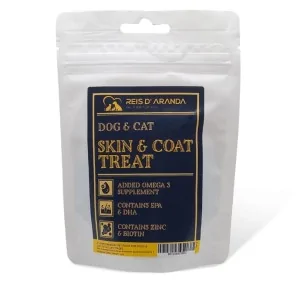The Tornjak originated from genetically homogeneous, almost extinct, indigenous shepherd dogs. These dogs have...
THE BRITISH SHORTHAIR CAT
INTRODUCTION
The British Shorthair has in common with the British Shorthair their neat manners and dignity. They are intelligent cats and their behaviour does not usually cause damage or mischief. Although there are exceptions, most shorthairs do not like to be on your lap. However, they do like to lie next to you or near you on the sofa if you let them. Females tend to be more serene and have a more serious demeanour than the more affable males.
THE ORIGIN OF THE BIRTISH SHORTHAIR
The origins of the British Shorthair date back to the first century AD, making it one of the oldest and most recognisable cat breeds in the world. These cats were imported by the Romans to keep camps free of snakes, mice and insects.
In time, they were crossed with the local European wildcats, giving rise to a distinctive breed of large, robust cats with short, thick coats, ideal for the conditions of their native islands. The modern British Shorthair retains this appearance according to artistic depictions.
In the 19th century, selective breeding focused on developing the blue-grey variant called the ‘British Blue’ or ‘English type’ (to differentiate it from the slimmer ‘Russian’ type). Harrison Weir, a British cat lover and artist, is credited with the initial idea of standardising the breed. Others suggest the involvement of a group of breeders. The new British Shorthair was shown at the first cat show at the Crystal Palace in London in 1871, organised by Weir, and was very popular at first.
By 1900, with the advent of breeds such as Persians, the British Shorthair lost popularity and breeding became scarce due to the First World War. To counteract this, breeders crossed Persians into their bloodlines and these genes gave rise to the British Longhair. During this time, longhair cats were included in the breeding programme for Persians. Since blue cats were judged together as de facto breed variants, British and Russian Blue were also crossed.
After the war, in order to maintain the breed standard, the GCCF decided to accept only third generation crosses between Persians and British Shorthairs. This led to another shortage of purebreds for breeding around the time of World War II, when the Persian and Russian Blue were reintroduced. British Shorthair breeders also worked with the French Chartreux, a breed similar in appearance but genetically unrelated to the British Blue. Breeders worked to restore the original British type and by the late 1970s, the distinctive British Shorthair gained formal recognition from both the Cat Fanciers Association (CFA) and The International Cat Association (TICA). According to 2013 GCCF registration data, it is again the most popular pedigree breed in its native country.
WHAT IS THE BRITISH SHORTHAIR CAT LIKE?
The British shorthair is medium to large in size, with a solid, stately bearing. It has a fighter's body with broad flanks. The legs are sturdy, with rounded feet and slightly shorter than the body. The selection has emphasised the volumes to accentuate a solemn appearance. This appearance is reinforced by the large unmistakable head, with short hair, and even more powerful than the throat. The nose is straight, short and broad. The ears are medium sized, rounded, broad at the base and set wide apart. The large, wide-set, round eyes are brightly coloured, in harmony with the coat. The tail, two thirds of the length of the body, is thick at the base and tapers to a rounded tip. The coat, which does not cling to the body, is thicker and silkier than that of an ordinary short-haired cat, and has a very compact texture.
THE HEALTH OF THE BRITISH SHORTHAIR CAT
The British Shorthair is considered a long-lived cat by the breed committee in the UK, with a life expectancy of 14-20 years. Data from veterinary clinics in England show an average life expectancy of 11.8 years. Swedish insurance data indicates an average life expectancy for the breed >12.5 years. 82% of British Shorthairs lived more than 10 years and 54% lived more than 12.5 years.
Hypertrophic cardiomyopathy (HCM) may be a problem in the breed. A study in Denmark of over 329 cats showed that 20.4% of males and 2.1% of females had HCM. In addition, 6.4% of males and 3.5% of females were considered to be equivocal cases.11 Currently, it is mandatory to test for HCM in males used for breeding by breeders organised under the Danish Fife member, Felis Danica.
The breed is considered to be at high risk for polycystic kidney disease (PKD). A DNA testing laboratory has observed a significant decrease in PKD mutations in the tested populations, and the frequency of genetic carriers is now 1%.
- POLYCYSTIC RENAL DISEASE: This disease forms cysts in the kidneys of cats, causing organ failure.15 It can be detected by genetic testing or ultrasound. Although there is no cure, medications are available to alleviate its effects and slow its progression.
- CARDIOMYOPATHY: Thickening of the heart muscle limits blood pumping, causing blood clots and heart failure.15 It can be detected by ultrasound, ECG and radiography. Medications alleviate and slow the progression of the disease.
- HYPERTHYROIDISM: Some British Shorthairs suffer from hyperthyroidism, caused by an excess of thyroid hormones affecting metabolism. This causes serious problems, as thyroid hormones affect almost every organ, especially the heart in cats.1617 Older cats in particular are more susceptible. Symptoms include weight loss, panting, malaise and greasy coat. Treatment of hyperthyroidism in cats requires surgery and medication.18
WHAT IS THE BRITISH SHORTHAIR CAT LIKE AS A COMPANION ANIMAL?
The character of the British Shorthair is that of a very sweet and cuddly cat that loves cuddling and feeling loved, is dependent on its owners, whom it adores and follows everywhere, and is also a good friend to children, with whom it plays even though it has grown from a kitten into an adult cat. Although they also like a quiet and placid life, they need their daily dose of games and running around the house to maintain a good muscle tone. It is almost always just a few minutes that are enjoyed watching them play and inviting their owners to join in. They are playful, happy-go-lucky cats that adapt to life in a small flat as well as to life in the country. They get on very well with other cats and their relationship with dogs is also very good.
In short, the British is a quiet but playful cat, sweet without being cloying and above all an adorable pet. For all these reasons, for his chubby face, his chubby body and his fur that looks like plush, the British is becoming more and more popular and is becoming the most sought after cat for companionship.
CONCLUSION
The British is a strong, big, round cat. A teddy bear with a calm but playful character, affectionate and not at all independent, in other words, a perfect feline companion. All this and much more is what has made this breed one of the most appreciated all over the world.
Leave a comment
Log in to post comments
















